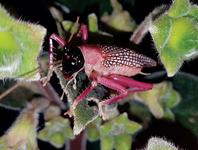Abstract
The Neotropical genus Epigomphus Hagen in Selys, 1854 groups 31 species distributed from Mexico to northern Argentina. Only two species have been recorded so far from Colombia. Here we present two new species found in the north of the Andean Colombian Cordillera Central, Epigomphus rufus sp. nov. and Epigomphus brillantina sp. nov. Full descriptions of adult male and female and adult male respectively, plus diagnoses, pictures of the diagnostic characteristics, natural history notes, and a distribution map are provided.
References
Belle, J. (1970) Studies on South American Gomphidae (Odonata). Studies on the Fauna of Surinam and other Guyanas, 11, 3–154.
Belle, J. (1980) A new species of Epigomphus from Guatemala. Entomologische Berichten, 40, 136–138.
Belle, J. (1981) A new species of Epigomphus from Mexico (Odonata: Gomphidae). Entomologische Berichten, 41, 61–63.
Belle, J. (1988) Epigomphus gibberosus, a new species from Peru, with lectotype designations for the eligible species of the genus Epigomphus (Odonata: Gomphidae). Tijdschrift voor entomologie, 131, 135–140.
Belle, J. (1994) Three new Neotropical Gomphidae from the genera Archaeogomphus Williamson, Cyanogomphus Selys and Epigomphus Hagen (Anisoptera). Odonatologica, 23, 45.
Bota-Sierra, C.A., Novelo-Gutiérrez, R. & Amaya-Vallejo, V. (2017) The rediscovery and redescription of Epigomphus pechumani Belle, 1970 (Odonata: Gomphidae), with a description of its female from the Western Colombian Andes. Zootaxa, 4306 (3), 419–427.
https://doi.org/10.11646/zootaxa.4306.3.8
Brooks, S.J. (1989) New dragonflies (Odonata) from Costa Rica. Tijdschrift Voor Entomologie, 132, 163–176.
Calvert, P.P. (1903) On some American Gomphinae (Odonata). Entomological news, and proceedings of the Entomological Section of the Academy of Natural Sciences of Philadelphia, 14, 183–192.
Calvert, P.P. (1920) The Costa Rican species of Epigomphus and their mutual mating adaptations (Odonata). Transactions of the American Entomological Society, 46, 323–354.
Donnelly, T.W. (1989) Three new species of Epigomphus from Belize and Mexico (Odonata: Gomphidae). The Florida Entomologist, 72, 428–435.
https://doi.org/10.2307/3495179
Forster, S. (2001) The Dragonflies of Central America exclusive of Mexico and the West Indies. A Guide to their Indetification. Gunnar Rehfeldt, Braunschweig, 150 pp.
Garrison, R.W., von Ellenrieder, N. & Louton, J.A. (2006) Dragonfly Genera of the New World. An illustrated and annotated key to the Anisoptera. John Hopkins University Press, Baltimore, Maryland, 368 pp.
Haber, W.A. (2017) Three new species of Epigomphus (Odonata: Gomphidae) from Costa Rica. Zootaxa, 4282 (1), 73–94.
https://doi.org/10.11646/zootaxa.4282.1.4
Hijmans, R.J., Cameron, S.E., Parra, J.L., Jones, P.G. & Jarvis, A. (2005) Very high resolution interpolated climate surfaces for global land areas. International Journal of Climatology, 25, 1965–1978.
https://doi.org/10.1002/joc.1276
Kennedy, C.H. (1946) Epigomphus subquadrices, a New Dragonfly (Odonata: Gomphidae) from Panama, with notes on E. quadrices and Eugomphus N. Subgen. Annals of the Entomological Society of America, 39, 662–666.
https://doi.org/10.1093/aesa/39.4.662
Novelo-Gutiérrez, R., Ramírez, A. & Delgado, D. (2016) The larvae of Epigomphus jannyae Belle, 1993 and E. tumefactus Calvert, 1903 (Insecta: Odonata: Gomphidae). PeerJ, 2016, 1–13.
https://doi.org/10.7717/peerj.2338
Riek, E.F. & Kukalová-Peck, J. (1984) A new interpretation of dragonfly wing venation based upon Early Upper Carboniferous fossils from Argentina (Insecta: Odonatoidea) and basic character states in pterygote wings. Canadian Journal of Zoology, 62 (6), 1150−1166.
https://doi.org/10.1139/z84-166


